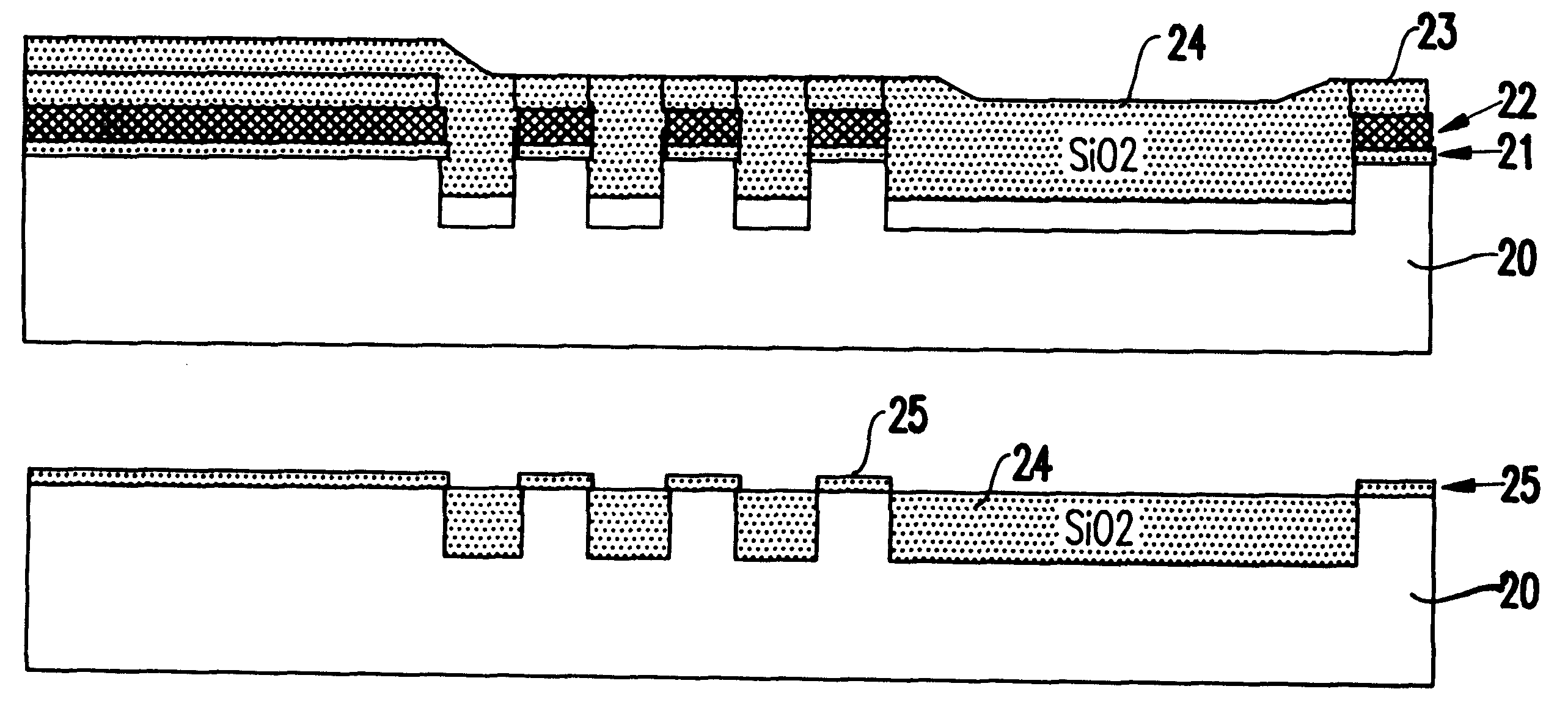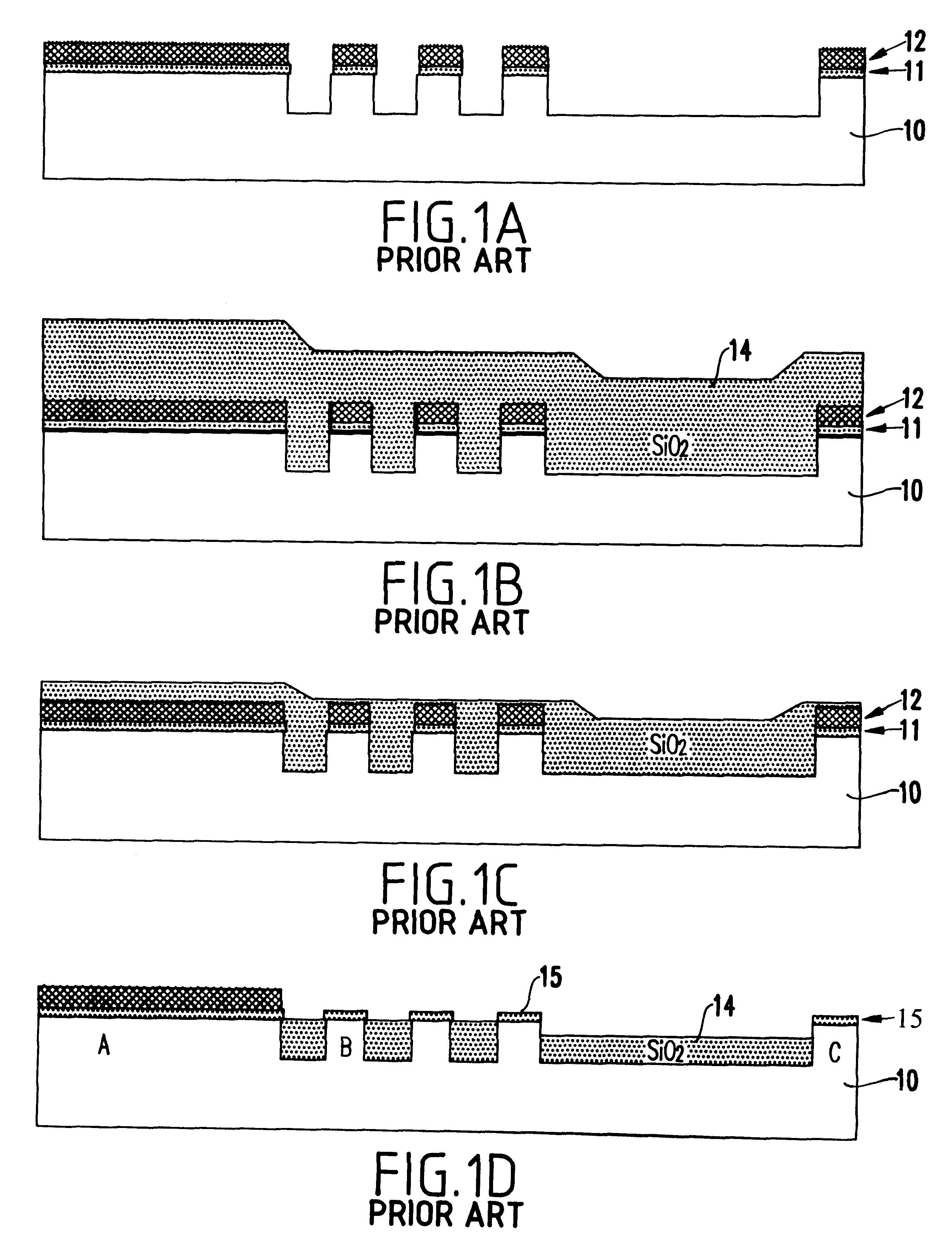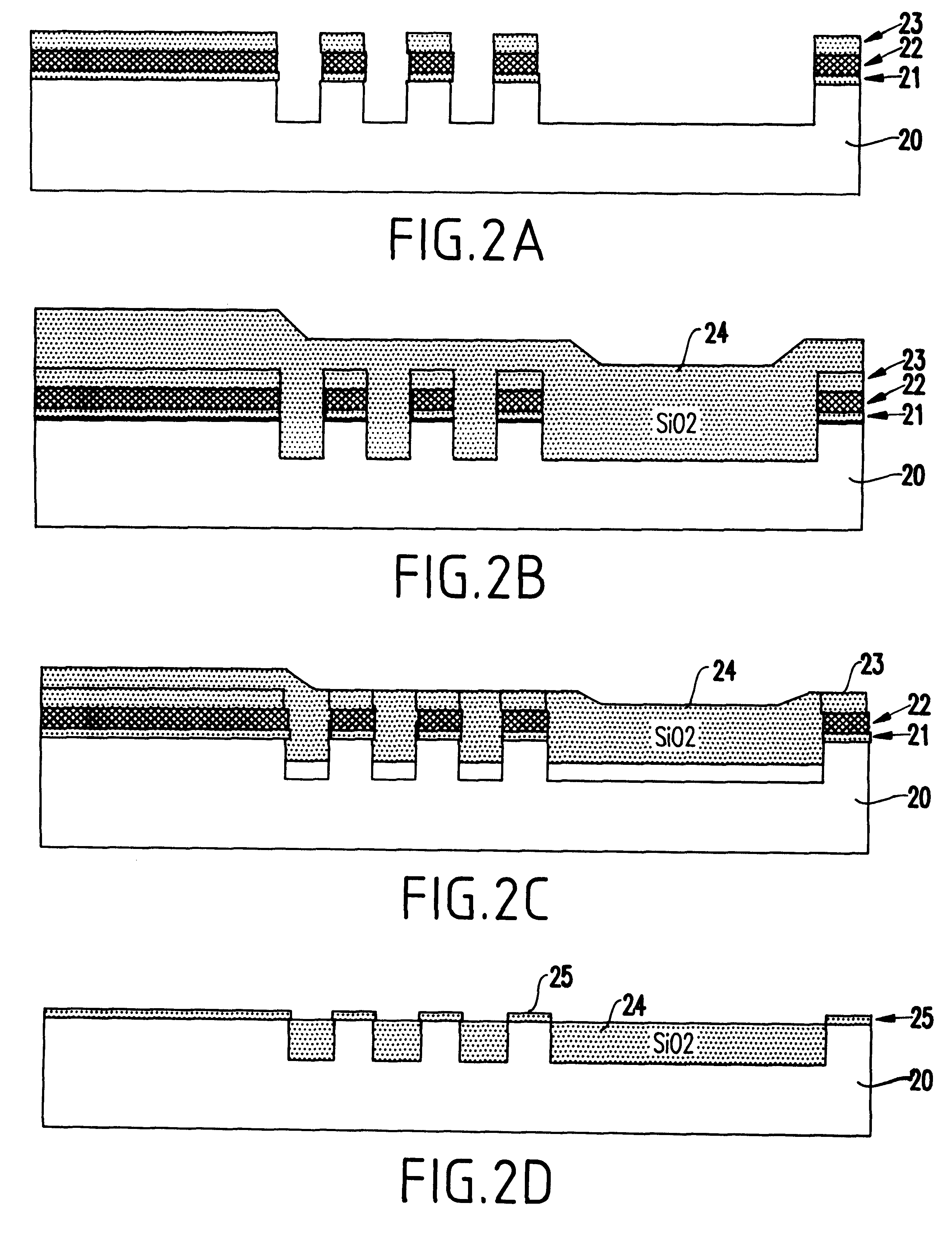Process for improving local uniformity of chemical mechanical polishing using a self-aligned polish rate enhancement layer
a technology of chemical mechanical polishing and enhancement layer, which is applied in the direction of semiconductor/solid-state device manufacturing, basic electric elements, electric apparatus, etc., can solve the problems of device failure, localized variation in the thickness of sio.sub.2, over-polishing of material in wide trenches
- Summary
- Abstract
- Description
- Claims
- Application Information
AI Technical Summary
Problems solved by technology
Method used
Image
Examples
first embodiment
First, it is noted that the present inventors have found that use of a self-aligned layer enhances the SiO.sub.2 polish rate above the pad nitride regions (i.e., active area). This results in a faster polish rate in these regions without altering the polish rate in regions with wide trenches, thereby resulting in a thicker SiO.sub.2 layer in the wide trenches after Chemical Mechanical Polishing.
Similarly, a self-aligned layer (e.g., preferably doped SiO.sub.2 or porous SiO.sub.2) with a fast polish rate can be placed above the pad nitride so that less over-polish is required to remove the SiO.sub.2 from regions with wide active areas. A process flow according to the invention is described hereinbelow, with reference to FIGS. 2A-2D. FIG. 2E illustrates a flowchart of the process 200 of the first embodiment. The advantages of such a method will be clear especially when comparing the inventive process with the conventional process shown in FIGS. 1A-1D.
Referring to FIG. 2A, first an ins...
second embodiment
A similar approach may be used for metal Chemical Mechanical Polishing, as shown in FIGS. 4A-4C and the flowchart of the process 400 shown in FIG. 4D.
First, as a basis for comparison a conventional metal CMP will be described referring to FIGS. 3A-3C. Referring to FIG. 3A, an interlevel dielectric (ILD) 31 is deposited and then trenches 32 are etched therein.
In FIG. 3B, a titanium / titanium nitride (Ti / TiN) liner 33 is deposited in the trenches 32 along with a conductor (e.g., tungsten) 34, thereby to fill the trenches 32.
In FIG. 3C, the conductor 34 is patterned by CMP.
However, as mentioned above, in the case of metal CMP, there is generally excessive removal of metal in regions with wide metal features (e.g., see region C in FIG. 3C), whereas there may be insufficient removal of metal in wide oxide regions (e.g., see region A in FIG. 3C). The excessive thinning of metal results in high resistance, and increased circuit delays. The residual metal on top of the dielectric 31 (see Reg...
third embodiment
According to a third embodiment of the present invention, this approach also can be used for oxide CMP over a gate stack, where the gate stack is used as a polish stop, as shown in FIGS. 6A-6C.
First, a conventional method of oxide CMP over a gate stack is shown in FIGS. 5A-5D.
First, in FIG. 5A, over a silicon substrate 50 is formed a SiO.sub.2 layer 51, a polysilicon 52 and a SiN layer 53 in turn. The gate stack is patterned, as shown.
In FIG. 5B, a dielectric 54 is deposited.
In FIG. 5C, the dielectric 54 is patterned by CMP.
To improve over the conventional process of FIGS. 5A-5C, in the third embodiment, a self-aligned layer 65 of doped SiO.sub.2 or porous SiO.sub.2 is used to enhance the SiO.sub.2 polish rate above the wide gate regions. This results in a faster polish rate in these regions without altering the polish rate in regions with wide trenches, thereby resulting in a thicker SiO.sub.2 layer in the wide trenches after CMP. A process flow is described below with reference to...
PUM
| Property | Measurement | Unit |
|---|---|---|
| thickness | aaaaa | aaaaa |
| thickness | aaaaa | aaaaa |
| thickness | aaaaa | aaaaa |
Abstract
Description
Claims
Application Information
 Login to View More
Login to View More - R&D
- Intellectual Property
- Life Sciences
- Materials
- Tech Scout
- Unparalleled Data Quality
- Higher Quality Content
- 60% Fewer Hallucinations
Browse by: Latest US Patents, China's latest patents, Technical Efficacy Thesaurus, Application Domain, Technology Topic, Popular Technical Reports.
© 2025 PatSnap. All rights reserved.Legal|Privacy policy|Modern Slavery Act Transparency Statement|Sitemap|About US| Contact US: help@patsnap.com



